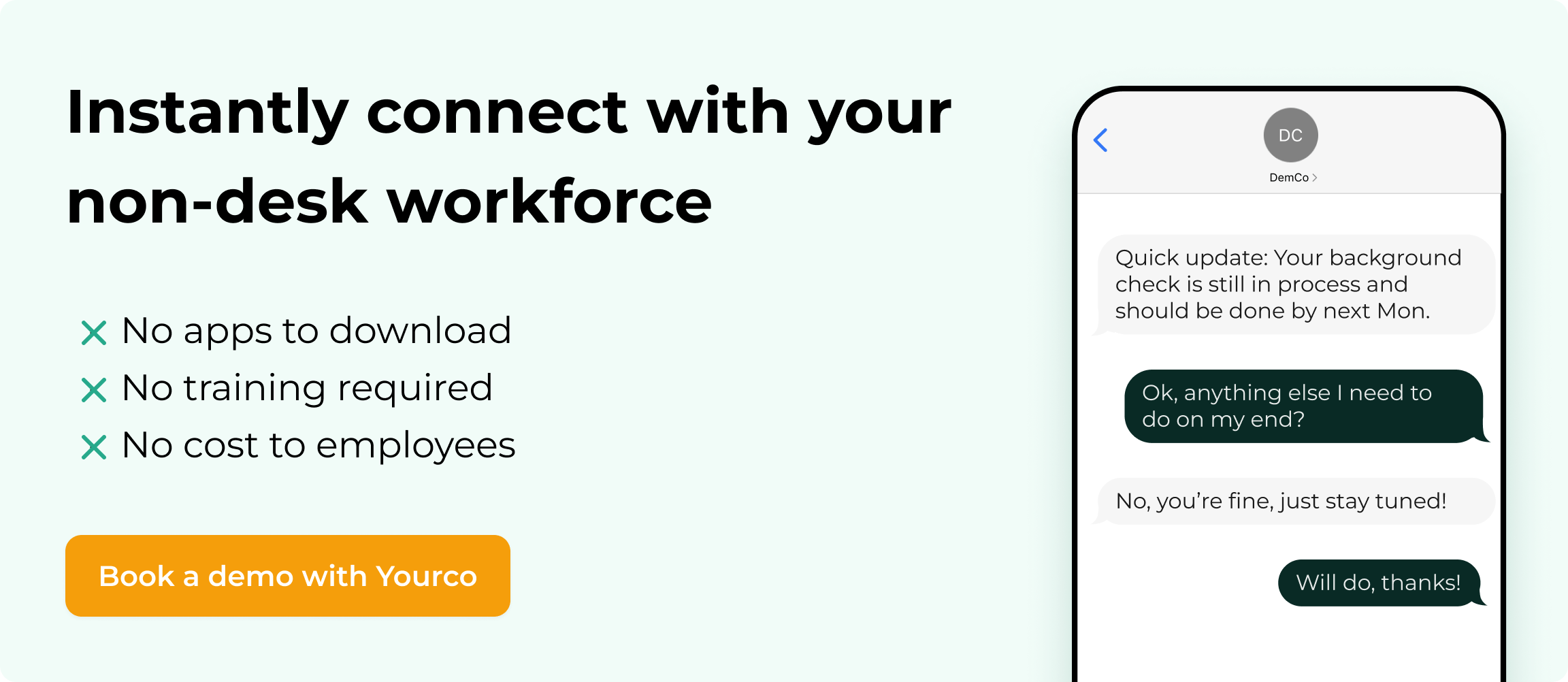Guide to Choosing Near Miss Reporting Software


Workplace safety is often thought of in terms of the accidents that do happen—but some of the most valuable insights come from the accidents that almost did. These “near misses” offer a critical chance to identify hazards, fix broken processes, and prevent real harm. Yet without the right systems in place, they go unreported, untracked, and unaddressed leaving companies vulnerable to costly and preventable incidents.
That’s where near miss reporting software comes in. Designed to capture close calls before they escalate, these digital tools make it easy for employees to report safety concerns in real time. This guide walks through why near miss reporting matters and what to look for in a software solution.
Benefits of Implementing Near Miss Reporting Software
Near miss reporting software delivers multiple advantages across safety performance, company culture, and financial outcomes. The following sections explore how these systems transform potential hazards into organizational improvements.
Proactive Hazard Identification
When employees can easily report potential hazards through near miss reporting software, you gain precious time. Fixing hazards at the design or process stage costs much less than making changes after incidents happen.
This approach creates a positive cycle: as hazards get fixed, employees trust the reporting system more and become more likely to report future concerns. Organizations with mature reporting systems build extensive hazard libraries that become valuable training resources, allowing new employees to learn from past situations.
Safety teams can track resolution times for different hazard types, allocating resources more effectively. Many companies find that categorizing near misses reveals surprising insights about which types of hazards employees encounter most frequently, often contradicting management assumptions.
This data-driven approach prevents overinvestment in low-frequency risks while addressing commonly reported concerns. Multi-site organizations benefit from cross-location comparisons, identifying whether hazards relate to specific locations, equipment types, or procedural gaps that might exist company-wide.
Enhanced Safety Culture
Easy-to-use near miss reporting software puts safety in everyone's hands. By implementing essential safety protocols and making near miss reporting accessible to all employees, organizations can build stronger safety cultures and experience fewer incidents.
Companies with anonymous reporting options discover issues that might otherwise remain hidden due to concerns about blame or retaliation. Safety committees benefit from rich discussion material based on real workplace situations rather than hypothetical scenarios.
The visibility of action taken following reports sends powerful messages throughout the organization about management's commitment to worker wellbeing.
The psychological impact extends beyond safety—employees who feel their input matters regarding safety often engage more with other improvement initiatives. Regular communication about lessons learned from near miss reports reinforces the message that safety is an organizational priority worthy of time and attention.
Cost Efficiency and Compliance
Beyond direct injury costs, organizations with robust reporting systems often get lower insurance premiums based on their safety records. The documentation from these systems also makes regulatory compliance easier, reducing paperwork headaches. Insurance providers increasingly offer premium discounts for companies demonstrating proactive safety management through near miss data.
Legal defense costs drop significantly when companies can provide comprehensive documentation showing they addressed hazards before incidents occurred. The administrative efficiency gained through digital management of safety concerns frees up safety professionals to focus on improvement rather than documentation.
Companies can also track the financial impact of their prevention efforts over time, calculating return on investment for safety initiatives. Many organizations find unexpected productivity benefits as processes improved for safety reasons often eliminate inefficiencies or unnecessary steps that slowed production.
Core Features of Effective Near Miss Reporting Software
Successful near miss reporting platforms share several common characteristics that contribute to their effectiveness. These features work together to create a comprehensive system that captures valuable safety information and transforms it into actionable improvements.
User-Friendly, Mobile-First Design
Reporting tools must be simple and accessible from anywhere. Near miss reporting software should remove barriers for field workers by eliminating the need for internet access or complex logins. This accessibility is critical in industries where workers may not have regular access to computers during their shifts or data plans.
Interface design also plays a significant role in adoption rates. Intuitive layouts and step-by-step prompts encourage consistent use across different education and technical proficiency levels. Companies that implement responsive design solutions ensure compatibility with various screen sizes and operating systems, reducing the likelihood of technical issues.
Additionally, multi-language support and voice-to-text features further enhance accessibility, overcoming language barriers and allowing broader participation in safety reporting efforts across diverse teams. By preventing misunderstandings through proper translation, companies can ensure that all employees can report near misses effectively.
Customizable Forms and Automated Workflows
Good reporting software offers forms that adapt to incident type and severity. These smart forms capture only relevant information, cutting completion time while maintaining quality. Many systems support photo and video uploads for visual context.
Automation speeds everything up, with automatic routing to appropriate supervisors reducing response times. Advanced platforms can even suggest corrective actions based on the reported near miss, creating consistent responses. Form branching logic eliminates irrelevant questions based on previous answers, showing workers only what applies to their specific situation.
This intelligence extends to location-based features, where GPS coordinates automatically associate reports with specific worksites or departments. The most effective systems include built-in validation to prevent incomplete submissions while offering offline functionality that stores reports until connectivity returns.
Analytics and Integration Capabilities
Real-time dashboards turn raw incident data into useful insights. These tools help safety managers spot trends, problem areas, and recurring issues that need fixing.
Integration with broader safety systems ensures near miss data informs your entire safety program. Advanced analytics engines can also detect subtle patterns across multiple variables that might escape manual review, identifying correlations between environmental factors, timing, equipment usage, and incident types.
Reporting systems with API capabilities connect with maintenance management platforms, automatically generating work orders based on reported hazards. Visualization tools transform complex statistical analyses into intuitive heat maps, risk matrices, and trend graphs that communicate priorities clearly to management teams.
SMS-Based Near Miss Reporting Software: Enhancing Accessibility for All Workers
Text messaging has become one of the most effective channels for near miss reporting. Unlike mobile apps that require downloads, logins, or training, SMS works instantly on any mobile phone. It’s familiar, fast, and universal making it ideal for capturing safety concerns from the frontlines.
Platforms like Yourco are purpose-built to harness this simplicity while delivering enterprise-grade functionality. Workers can submit near-miss reports via text in their preferred language, thanks to built-in AI-powered translation and voice-to-text capabilities. They can even take a picture of the incident and report it to management via SMS. This approach breaks down common barriers like digital literacy, limited internet access, or lack of company-issued devices—ensuring that everyone, from warehouse staff to drivers to seasonal field crews, can participate in safety reporting.
But ease of reporting is just the start. Yourco provides effective communication tools that transform incoming messages into structured insights using AI-powered tagging that automatically categorizes submissions by type, location, and risk level. This standardization of unstructured input enables organizations to turn hundreds of individual texts into a unified dataset.
Over time, these reports are aggregated across shifts, teams, and job sites, allowing safety leads and operations managers to:
- Identify repeat hazards or trends
- Track which types of near misses are most common
- Pinpoint high-risk areas or recurring timeframes
- Compare safety performance across locations
All this data is visualized in real-time dashboards that make it easy to act. Whether it’s triggering retraining, escalating to leadership, or deploying resources for immediate intervention, Yourco empowers safety and ops leaders to make proactive decisions, before incidents happen.
SMS-based near miss reporting isn’t just about accessibility, it’s about giving organizations the visibility and tools to create a culture of safety grounded in data and speed.
Overcoming Implementation Challenges
Even the best software requires thoughtful implementation strategies to achieve desired results. These approaches help organizations maximize return on their technology investment while building lasting safety improvement systems.
Employee Training and Engagement
Effective training significantly impacts reporting rates. Rather than one-time sessions, consider a continuous approach:
- Provide role-specific scenarios showing the reporting process
- Use short 3-5 minute refresher training modules
- Create simple visual guides accessible when needed
- Share success stories where reports led to real improvements
Training effectiveness increases when delivered in the actual work environment rather than classroom settings, allowing employees to practice reporting in realistic conditions. Peer-to-peer training programs where experienced employees mentor colleagues often outperform manager-led sessions.
Companies find significant value in creating short, focused video demonstrations showing the reporting process from start to finish. Multi-language training materials prove essential for diverse workforces, with illustrated guides overcoming language barriers.
The most successful programs include separate training tracks for different roles: report submitters, reviewers, and administrators. Gamification elements like badges, leaderboards, or simple recognition systems increase engagement with ongoing training efforts.
Building a Supportive Reporting Culture
Psychological safety directly influences how often people report issues. Create a supportive environment by:
- Ensuring anonymous reporting options exist
- Publicly recognizing valuable reports (while respecting anonymity when requested)
- Showing direct connections between reports and safety improvements
- Having leadership actively participate in the reporting process
Management messaging should emphasize learning over blame, explicitly stating that reports won't result in punishment except in cases of willful negligence. Organizations benefit from creating clear service level agreements regarding response times to submitted reports, demonstrating that submissions receive prompt attention.
Regular town hall meetings or safety moments highlighting valuable reports reinforce positive reporting behaviors. Many companies find success with designated safety champions throughout their organization who encourage peers to report concerns.
Celebrating reporting milestones—such as reaching 100 reports or 30 days of consistent submissions—creates positive momentum around the reporting process. The most mature safety cultures incentivize quality over quantity, rewarding thorough reports that enable effective interventions.
Turn Safety Challenges into Prevention Victories!
Near miss reporting software helps companies move from reactive to proactive safety. By capturing close calls before they become incidents, organizations can reduce injuries, cut costs, and stay ahead of compliance requirements. But to truly make an impact, reporting needs to be both accessible and actionable.
Yourco is the leading SMS-based reporting platform designed for the non-desk workforce. It eliminates common barriers to participation—no downloads, no training, and no internet required. Employees simply send a text when something doesn’t feel right, using the phones they already have. With built-in translations and voice-to-text options, reporting is possible for every worker, regardless of language or literacy level.
Beyond accessibility, Yourco adds a powerful analytics layer. AI-powered tagging automatically classifies every report by type, risk level, and location. These reports feed into real-time dashboards, giving safety managers a clear view of patterns across teams, shifts, and job sites. This allows leaders to spot emerging issues, trigger retraining, or escalate concerns before an incident occurs.
When near miss reporting is easy to use and backed by smart insights, it creates a culture where safety becomes everyone’s responsibility. The more employees see their input lead to change, the more likely they are to speak up—turning everyday observations into long-term prevention.
Try Yourco for free today or schedule a demo and see the difference the right workplace communication solution can make in your company.



